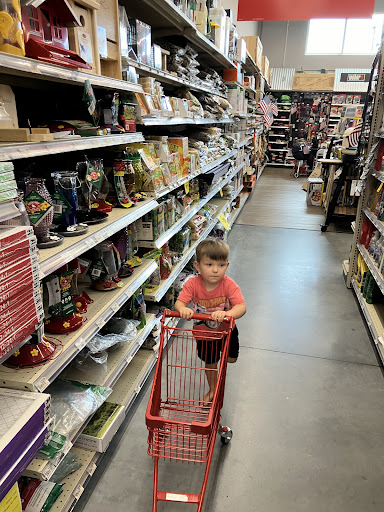Giving Your Angle Grinder a Second Life
When your angle grinder acts up, you want quick answers. Here’s a look at common problems in angle grinder repair and what usually causes them:
- Can’t lock spindle (10% of reports): Check the wrench, spring, cap, shoulder pin, or button.
- Bad vibration (9% of reports): Inspect the bearing, carbon brush, gear, flange, or disk.
- Excessive sparks from motor (8% of reports): Examine the carbon brush, armature, holder, or springs.
- Grinding or squealing sound (6% of reports): Look at the gears, bearing, armature, carbon brush, or spindle.
- Motor spins but grinding wheel doesn’t (5% of reports): Check the gears, flange, spindle, or coupler.
- Tool won’t turn on: Inspect the power cord, switch, or carbon brushes.
- Motor gets hot (3% of reports): Check the carbon brushes, bearings, armature, field, fan, holder, or gears.
An angle grinder is a truly useful tool for any DIYer or homeowner. It helps with many tasks, from cutting metal to smoothing surfaces. But when it stops working right, its value quickly drops. Instead of buying a new one, fixing your trusted tool can save you money and keep it working for years. It’s a smart way to keep your workshop ready for anything.
The helpful team at Lowcountry Ace is here to empower you with the knowledge for successful angle grinder repair. We believe in giving your tools a second chance.
Common angle grinder repair vocab:
Safety First: Essential Precautions and Tools
Before we dive into the nitty-gritty of angle grinder repair, let’s talk safety. Working with power tools, even when they’re unplugged, demands respect. We always recommend wearing appropriate safety gear and taking a few key precautions to keep yourself safe and sound.
First and foremost: always unplug your angle grinder before attempting any repairs or even just inspecting it. This is non-negotiable. An accidental power-up could lead to serious injury.
Next, gear up! Personal Protective Equipment (PPE) is your best friend. We’re talking:
- Safety goggles or a face shield: To protect your eyes from dust, debris, or errant parts.
- Work gloves: To protect your hands from sharp edges and give you a better grip.
- Dust mask: Especially if you’re dealing with internal dust buildup.
- Hearing protection: While not strictly for repair, it’s a good habit if you’re testing the tool afterward.
Finally, ensure you’re working in a clean, well-lit space. This helps prevent tripping hazards and allows you to clearly see what you’re doing. A clear workbench also means you won’t lose tiny screws or springs.
Understanding Your Angle Grinder’s Anatomy
To truly tackle angle grinder repair, it helps to know what makes this powerful tool tick. Angle grinders, whether corded or cordless, share fundamental components that work together to deliver that grinding and cutting power.
- Motor Housing: This is the main body that encases the motor and internal components.
- Gearbox (or Head): Located at the front, this houses the gears that transfer power from the motor to the spindle.
- Spindle: This is the rotating shaft where your grinding or cutting wheel attaches. Many have a spindle lock button to help you change wheels easily.
- Carbon Brushes: These small, consumable components conduct electricity to the motor’s spinning part (the armature). They’re a common wear item.
- Switch: The on/off mechanism that controls power to the motor.
- Power Cord (Corded) or Battery Pack (Cordless): The source of electricity. Corded grinders offer consistent power, while cordless models provide ultimate portability.
- Armature and Field: These are the electrical components within the motor that create the magnetic field necessary for rotation.
Understanding these parts will make diagnosing and fixing issues much clearer. For a broader perspective on these handy tools, you can check out An overview of angle grinders.
Essential Tools for Angle Grinder Repair
Having the right tools makes any repair job smoother and safer. For angle grinder repairs, we recommend having these basics on hand:
- Multimeter: Indispensable for testing continuity in cords, switches, and motor components.
- Screwdrivers: A good set of Phillips head and flathead screwdrivers is a must. Many grinders also use Torx screws, so a set of Torx bits (like a T15 or T20) is highly recommended.
- Pliers: Needle-nose pliers can be useful for manipulating small wires or springs.
- Wrenches: For removing or tightening the grinding wheel and sometimes for gearbox components.
- Spudger or Plastic Opening Tool: Helpful for prying open plastic casings without causing damage.
- Contact Cleaner: For cleaning electrical contacts and switches.
- Lubricant/Grease: Specifically designed for tool gearboxes, to keep things running smoothly.
A Step-by-Step Guide to Angle Grinder Repair
Is your angle grinder giving you grief? Don’t toss it. This guide offers a systematic approach to diagnosing and fixing common problems, empowering you to handle repairs yourself, save money, and bring your tool back to life.
Angle grinder repair is methodical. Most problems follow a pattern: troubleshoot symptoms, diagnose the faulty part, and then clean, repair, or replace it.
Before you start, always refer to your angle grinder’s owner’s manual. It contains model-specific instructions, diagrams, and safety warnings that are crucial for a successful repair.
Sourcing replacement parts isn’t as daunting as it seems. Common parts like carbon brushes and switches are readily available, and the helpful team at Lowcountry Ace can help you find what you need.
Grinder Won’t Start or Loses Power
This is a frustrating problem: your grinder won’t turn on, or it sputters and dies. Let’s walk through the usual suspects.
Power cord inspection is your first stop for corded grinders. Check the entire length of the cord for any visible damage, cuts, fraying, or breaks. Pay special attention to areas near the plug or where the cord enters the tool, as these spots take the most abuse. A multimeter can test for continuity. If there’s a break, a replacement cord is often the simplest fix.
Faulty switch diagnosis comes next. The switch can wear out or get dirty, leading to intermittent power or complete failure. If your grinder occasionally turns on or you hear a click but nothing happens, the switch is a likely culprit. We’ll dive deeper into switch replacement in the next section.
Worn carbon brushes are a very common culprit. These components are designed to wear down. When they get too short, they lose proper contact with the commutator, and your motor won’t get power. This can cause the grinder to stop or run intermittently with excessive sparking.
Tripping circuit breaker causes indicate a more serious issue. If your grinder trips the breaker immediately, it usually means there’s a short circuit. Common troublemakers include a damaged power cord, severely worn carbon brushes, a bad switch, or issues with the armature or field windings.
For cordless battery issues, start simple: ensure the battery is fully charged. If it is, try another battery if you have one. If the problem persists, the battery may be faulty, or the tool’s battery contacts might be dirty and need cleaning.
How to Replace Carbon Brushes
Replacing carbon brushes is one of the easiest and most rewarding angle grinder repair tasks. This simple maintenance can breathe new life into your tool.
Locating brush caps is your first step. Most angle grinders have external brush caps on either side of the motor housing, usually unscrewed with a flathead screwdriver. Some newer models have tool-free caps.
Removing old brushes is straightforward once the caps are off. The brush and spring will typically slide right out. Note their orientation for reinstallation. Sometimes they might be slightly stuck due to carbon dust; gentle wiggling usually does the trick.
Inspecting the commutator is an important, often-skipped step. After removing the brushes, look at the copper surface they contact. It should be clean and smooth. If dirty, clean it with electrical contact cleaner. If it’s severely grooved or burnt, it indicates a more serious problem needing professional attention.
Installing new brushes is simply the reverse process. Insert them with the same orientation as the old ones, making sure the spring pushes the brush firmly against the commutator. The fit should be snug but not forced.
Signs of worn brushes are obvious once you know what to look for. Excessive sparking, smoke, significant power loss, intermittent operation, or excessive heat all point to brush problems. We recommend checking your brushes every 50-60 hours of use, or whenever you notice these symptoms.
Fixing a Faulty Power Switch
A faulty power switch can make your angle grinder unpredictable. Here’s how to fix it.
Disassembling the housing requires patience. With the grinder unplugged, carefully open the motor housing by unscrewing the screws holding it together (often Phillips or Torx). Take a photo before you start to help with reassembly.
Testing the switch with a multimeter confirms if it’s the problem. Set your multimeter to continuity mode. With the switch “off,” there should be no continuity. When “on,” the multimeter should show continuity. If not, you likely have a bad switch.
Replacing the switch assembly involves disconnecting the old wires and connecting them to the new switch. Note which wire goes to which terminal—a photo helps. Some switches have plastic linkages that can break. While some DIYers fabricate replacements, this requires solid electrical knowledge and attention to safety.
Wiring connections deserve extra attention during reassembly. Ensure all connections are secure and wires are routed away from moving parts and sharp edges to prevent shorts.
Troubleshooting Excessive Noise, Vibration, or Heat
When your angle grinder starts making excessive noise or vibrating, it’s signaling an internal problem.
Inspecting gears for wear should be your first move for grinding or squealing sounds. Open the gearbox and examine the gears for missing teeth, excessive wear, or pitting. They need to mesh smoothly to work properly.
Checking for bad bearings is key. Bearings allow parts to spin smoothly; when they wear out, they cause bad vibration, grinding sounds, or squealing. You can often feel excessive play in the spindle or armature shaft when a bearing is failing. Worn bearings also contribute to overheating.
Lubricating the gearbox often solves noise and heat problems. Over time, grease can dry out or leak. Clean out any old grease and apply fresh, high-quality grease designed for power tool gearboxes. Don’t overfill it.
Fan obstruction is an often-overlooked cause of overheating. The internal fan keeps the motor cool, but dust and debris can clog it. Make sure the vents are clear and the fan spins freely. A broken fan blade may require replacement.
Armature issues represent a more complex angle grinder repair. A damaged armature (bent shaft, worn commutator, or damaged windings) can cause vibration, noise, and heat. This repair often requires armature replacement and might be best left to a professional.
Advanced Repairs and Maintenance
Ready to take your angle grinder repair skills to the next level? Once you’ve got the basics down, there’s a whole world of more complex fixes waiting for you. These deeper repairs often mean getting your hands dirty with the tool’s inner workings, but don’t worry – we’ll guide you through it.
The best part about advanced repairs? Many of them can be prevented with good old-fashioned maintenance. Regular cleaning of the vents keeps your motor from overheating, while checking for loose screws or wobbly components can catch problems before they turn into expensive headaches. Think of it like changing the oil in your car – a little attention now saves you big trouble later.
Advanced Angle Grinder Repair: Tackling Gears and Bearings
When your grinder starts making noise like a freight train or vibrating like it’s trying to escape your workbench, it’s time to look at the gears and bearings. These are the hardworking parts that keep everything spinning smoothly, and when they fail, your grinder becomes about as useful as a paperweight.
Gearbox disassembly is where things get interesting. You’ll need to remove the front head of your grinder by unscrewing several screws that connect the gearbox housing to the motor body. Here’s a pro tip: work slowly and keep track of where everything goes. Gears and shims can be loosely fitted, and you don’t want them bouncing across your workshop floor.
Identifying worn gears is usually pretty straightforward – they’ll look beat up. If your motor spins but the grinding wheel just sits there, or if you’re hearing sounds that would make a mechanic wince, your gears are likely stripped or severely worn. Look for missing teeth, chips, or significant wear patterns. Any gear showing these signs needs to go.
Bearing replacement is a bit trickier but totally doable. If you feel excessive play when you wiggle the spindle or armature shaft, or if the bearing feels rough and gritty when you spin it by hand, it’s time for a new one. Getting old bearings out often requires specialized tools like bearing pullers, and installing new ones might need a press or careful tapping with a socket that matches the bearing’s outer race.
Here’s why this stuff matters: gears transfer the high-speed motor rotation to the lower, more powerful spindle rotation. When they wear out, that power transfer becomes inefficient or stops completely. Bearings reduce friction and support the spinning shafts. When they fail, they create friction, heat, noise, and vibration that can quickly damage other parts.
For those really stubborn gearbox problems, you might find this resource helpful: A guide to noisy gearbox repair.
Repairing Broken Plastic Components
Modern angle grinders love their plastic parts – they’re lighter and cheaper than metal alternatives. But plastic can crack, especially after a few too many encounters with the garage floor. Before you write off your grinder, consider that some creative repairs can bring it back to life.
Epoxy resin repairs work great for minor cracks or small broken tabs. Clean the area thoroughly, mix your epoxy according to the instructions, and apply it to the break. For extra strength, you can reinforce the repair with fine fiberglass mesh or even Kevlar strands embedded in the epoxy. This method works best for parts that aren’t under extreme stress.
3D printing replacement parts is becoming a fantastic option for small, broken plastic components. If you have access to a 3D printer, you can design and print a replacement part. Tough resin materials are often suitable for tool parts because of their durability. This is especially valuable for bringing older tools back to life when official parts are no longer manufactured.
When should you attempt a plastic repair? We recommend sticking to non-structural components or parts that don’t bear significant load. If a critical structural component is broken – like where handles attach – or if the repair might compromise safety by exposing electrical components, it’s often safer to replace the entire housing or consider whether the tool is beyond economical repair.
When to Repair vs. When to Replace Your Angle Grinder
This is the million-dollar question every tool owner faces. While the helpful team at Lowcountry Ace loves empowering you to fix your tools, sometimes replacing your angle grinder is simply the smarter choice.
| Factor | Repair Often Makes Sense | Replacement Often Makes Sense |
|---|---|---|
| Cost of Parts | Inexpensive, readily available parts (e.g., carbon brushes, common switches, power cords). | Expensive, specialized parts (e.g., armature, field, complex gear sets, entire motor assembly). |
| Age of the Tool | Relatively new, still under warranty, or a high-quality tool with many years left. | Very old, heavily used, or a cheaper model where wear is extensive. |
| Availability of Parts | Parts are easy to find from authorized dealers or reputable aftermarket suppliers. | Parts are obsolete, hard to find, or only available at prohibitive costs. |
| Complexity of Repair | Simple, straightforward fixes (e.g., brush replacement, cord repair, switch cleaning). | Complex internal repairs requiring specialized tools, deep technical knowledge, or significant time. |
| Warranty Status | If the tool is under warranty, check if DIY repair voids it. | If the tool is out of warranty and the repair cost approaches the cost of a new tool. |
| Safety Concerns | Repairing doesn’t compromise the tool’s safety features. | Repairing might leave the tool unsafe (e.g., compromised housing, electrical integrity). |
| Time/Effort | You have the time, patience, and enjoyment for DIY repairs. | You need the tool working immediately, or prefer to invest your time elsewhere. |
Here’s a good rule of thumb: if the repair cost approaches or exceeds 50-70% of a new, comparable angle grinder, replacement often makes more sense. Many users find that lower-end angle grinders simply aren’t designed for extensive repairs – the cost of an armature or gearbox can quickly make them uneconomical to fix.
But for a quality tool you love? A repair can truly bring it back to life and give you years more service. Sometimes it’s not just about the money – it’s about the satisfaction of fixing something with your own hands.
Frequently Asked Questions about Angle Grinder Repair
We get a lot of questions about bringing these hardworking tools back to their prime. The helpful team at Lowcountry Ace loves helping folks troubleshoot their power tools, and we’ve noticed some questions come up again and again. Let’s tackle the most common ones we hear.
What are the most common angle grinder problems I can fix myself?
The good news is that many angle grinder repair issues are surprisingly simple to tackle with a little patience and the right approach. You don’t need to be a professional repair technician to handle most of these problems.
Worn carbon brushes top our list of DIY-friendly fixes. These little components are designed to wear out over time, and replacing them is usually as simple as unscrewing a cap and sliding in new ones. Damaged power cords are another common culprit that you can absolutely handle yourself. A frayed or cut cord isn’t just annoying – it’s a real safety hazard that needs immediate attention.
Faulty power switches might sound intimidating, but they’re often modular parts that unplug and plug back in. And here’s one that’s almost too easy: clogged vents. A simple cleaning with compressed air can prevent overheating and add years to your motor’s life.
These basic repairs cover a huge percentage of the problems we see with angle grinders. Most folks are pleasantly surprised by how manageable these fixes really are.
Why is my angle grinder sparking so much?
This is probably the question that worries people the most, and for good reason. While a little sparking from the motor is completely normal for brushed motors, excessive sparking is your grinder’s way of telling you something needs attention.
Worn carbon brushes cause the vast majority of sparking issues. As these brushes wear down, they can’t make consistent contact with the commutator, which creates more arcing and those dramatic sparks you’re seeing. It’s like a bad connection that keeps making and breaking contact.
Sometimes the problem is a damaged armature or commutator. If those copper bars that the brushes rub against get dirty, grooved, or damaged, you’ll see increased sparking. Debris in the motor housing can also cause trouble – dust and metal particles love to get inside and interfere with everything.
The key thing to remember is that excessive sparks need quick attention. Ignoring them can lead to motor damage or even smoke coming from your tool, and nobody wants that kind of excitement in their workshop.
How often should I perform maintenance on my angle grinder?
Regular maintenance is honestly the best investment you can make in your angle grinder’s future. It’s much easier to prevent problems than to fix them after they’ve already caused damage.
After each use, give your grinder a quick wipe-down to remove dust and debris. Those ventilation slots are crucial for keeping your motor cool, so a blast of compressed air to clear them out goes a long way.
Every 50-60 hours of use, take a peek at your carbon brushes. This isn’t a hard rule since everyone uses their tools differently, but it’s a solid guideline. If you’re putting your grinder through heavy daily use, check them more often.
Once a year, or whenever you notice unusual noise or heat, it’s time for a gearbox inspection and fresh lubrication. Clean out that old, crusty grease and apply fresh grease designed for power tool gearboxes. Your gears and bearings will thank you with years of smooth operation.
A little preventative care really does go a long way. It keeps your angle grinder ready for action whenever your next project calls for it.
Get Your Project Back on Track
There’s something deeply satisfying about fixing a tool with your own hands. When you successfully tackle angle grinder repair, you’re not just saving money – you’re becoming more self-reliant and gaining valuable skills that’ll serve you for years to come.
Every time you replace those worn carbon brushes or diagnose a faulty switch, you’re learning how these hardworking tools actually function. That knowledge makes you a better DIYer overall. Plus, there’s real pride in knowing you brought a tool back from what seemed like certain death.
The money you save is nothing to sneeze at either. A simple brush replacement might cost you $10 and twenty minutes of your time, versus $80-150 for a replacement grinder. Even more complex repairs often cost a fraction of buying new, especially when you’re dealing with a quality tool that’s built to last.
Beyond your wallet, you’re also doing something good for the environment. Every tool you repair is one less item heading to the landfill. In our throwaway culture, taking the time to fix something that’s broken is actually pretty revolutionary.
We hope this guide gives you the confidence to roll up your sleeves and tackle that angle grinder repair project. Most problems are simpler than they first appear, and with patience and the right approach, you can get that grinder spinning again.
When you need replacement parts, quality tools, or just want to chat through a tricky repair with someone who understands, the helpful team at Lowcountry Ace is here for you. We’re proud to serve James Island, Folly Beach, and the greater Charleston area with everything you need to keep your projects moving forward.
Learn more about our hardware selection
Lowcountry Ace Hardware: Your one-stop shop for home improvement. We offer quality products from trusted brands and expert advice from our experienced staff. Located on James Island, visit us for tools, hardware, fishing gear, power tools, building materials, grills & smokers, electrical and plumbing supplies, and more.

















